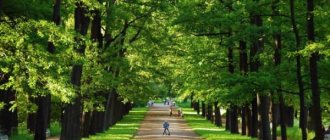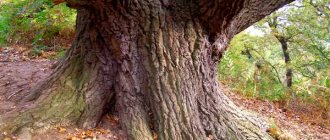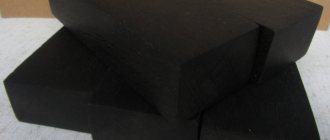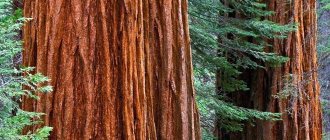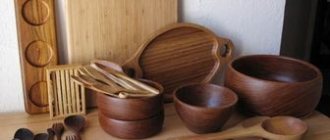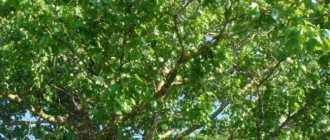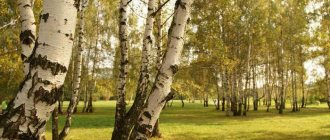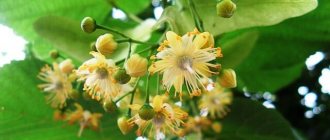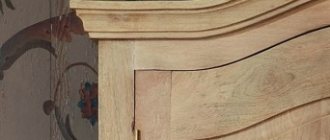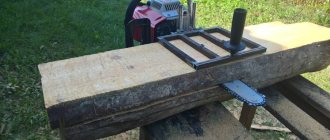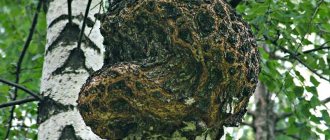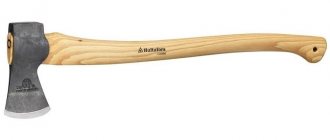How quickly can an oak tree grow to form a beautiful crown?
For placement near the home, oak is a reliable tree due to its hard wood, although its roots can rot if poisoned by any toxic substance. Therefore, in general, if any tree dries out near buildings, you should not wait long, but should be cut down immediately.
An oak tree grows from a sapling into a tall beauty faster than you might think. Biologists believe that in nature oak grows for only 18–25 days a year , this happens in May–June, after which everything that has managed to grow during this time (shoots approximately 10–25 cm long) slowly matures, preparing welcome winter. However, when applying nitrogen-containing fertilizers, such as slurry or grass fertilizer, the growth period of young oak trees is greatly extended, and over the summer they give growth of 70 cm or more (you just need to remember that oak easily gets powdery mildew, so there is a reasonable limit in adding easily digestible there should still be fertilizers).
The first couple of years after planting, the oak tree will “sway,” and then its growth rate will be comparable to the growth of the apple tree. Thus, a well-planted “nest” of oak trees will quickly acquire a lush shape. You just need to take into account that oak is a difficult-to-establish plant and does not tolerate transplantation well, so you need to plant a lot of seedlings at once, with the expectation that only a few of them will grow well.
The giant oak tree in France, in the hollow of which there is a room with a bench carved directly into the body of the oak tree, is more than two thousand years old. It is precisely because of their age and gigantic size that many oaks have become relics of cities and nations and are under protection. The Tsar Oak, the Kaiser's Oak, the 600-year-old Oak, the Chapel Oak, the Master's Oak have legends about each of them.
Oak is hardy and unpretentious, but despite these properties,
oaks do not grow in South America and Australia; in Africa they are found only along the Mediterranean coast.
In Russia, English oak grows with two varieties: summer oak and winter oak, differing in flowering time. Mongolian oak grows in the Far East and Amur region. Sessile oak grows on the Black Sea coast of the Caucasus.
In the 18th and 19th centuries, it was customary to decorate the clearings in front of the landowner's house with oaks; oaks were grown in palace and manor parks. Sometimes oak trees are planted to green cities; recently, gardeners have also begun to pay attention to this wonderful plant. Hence the logical question - how many years does an oak tree grow until the moment when it allows you to admire its beauty and grace?
How can you see tree rings?
In trees, growth rings can be seen in the transverse cuts of trunks.
Interesting materials:
How to transfer screen from phone to computer? How to transfer a file to your phone via Wi Fi? How to transfer a file from computer to phone via USB? How to transfer a file from a laptop to a phone via Bluetooth? How to transfer files to your phone via Wifi? How to transfer files from computer to phone via bluetooth? How to transfer files from computer to phone via Bluetooth? How to transfer files from computer to Xiaomi phone? How to transfer files from computer to phone? How to transfer files from phone to flash drive?
How long does it take to grow an oak tree from an acorn?
It is better to plant oak trees with acorns; when transplanted, seedlings with bare roots do not take root well. If you are in a hurry to “live”, buy an oak tree from a skating rink, you can save 8 years or add them to your life, if it’s more pleasant for you to think about it that way. Plants with a closed root system take root and grow well, but unfortunately, an oak planted in this way will not be durable. Of course, it will be enough for your lifetime, but no more, this is due to the improper development of the root system of an oak seedling grown in a small vessel in the first years of life. By growing an oak from an acorn, you will lose a couple of years, but an oak grown in this way will grow for a long time and your children, grandchildren and grandchildren of your grandchildren will remember you.
Angel Oak is one of the oldest trees on the planet.
As for the rhetorical question, how much does an oak tree grow per year in centimeters , there is no direct answer. In the first year of life, the growth of the plant is from 7 to 30 cm, the second from 40 to 80 cm, the third and subsequent years up to 15 years 60-80 cm. Moreover, the growth of oak largely depends on natural conditions and the species characteristics of the plant. In the forest, the oak tree has a compact crown; in trees growing in open areas, the crown spreads out like a huge tent, sometimes covering an area of up to a quarter of a hectare. On the contrary, the alpine oak grows stocky and squat.
Planting and caring for pedunculate oak
- Propagation of pedunculate oak is carried out by rooting green cuttings. It is best to use young plants for this.
- Another good propagation method is to plant freshly harvested acorns.
- The fruits are collected in the fall and placed in a dark, cool place until spring.
- Then the pedunculate oak seeds are germinated and transplanted into the soil.
Planting is best done in early spring in a sunny place protected from weather hazards.
The soil should be fertilized with a nutrient mixture of peat, sand and turf.
At high humidity, crushed stone is added to the fertilizer.
When planting, the roots are not buried deeply - they are left at ground level.
Attention! It is very important to actively water the plant and loosen the soil for several days after planting. Urea is usually used as a top dressing.
Pests
Pathogenic fungi are considered the main pests of wood . They appear as painful spots. Gradually the leaves die off.
A dangerous oak disease is dropsy - the tree rots from excess moisture and dies.
Also, do not forget about transverse cancer , which affects the trunk and branches of the plant, depriving them of vitality and breaking them.
Coniferous trees - counting the number of years lived by whorls and bark
The peculiarities of calculating the life time of some coniferous trees allow this to be done quite accurately and easily, without using mechanisms. For pine, spruce, cedar, and fir, it is enough to count the whorls located on the trunk.
How to determine the age of a tree in this way? Very simple! First of all, you need to know what a whorl is.
A whorl is a fan-like divergence of branches. They are on the trunk. Count them. Now you should add 3 to the existing value if the object of your attention is pine, 4 - for spruce, in the case of fir and cedar - 5 and 10, respectively.
These indicators indicate the age at which the first whorl is formed in a particular tree species. The number obtained as a result of summation should be considered the age of the tree.
An important sign of plant maturity is their bark. The structure and color matter. Young trees tend to have lighter and smoother bark. For pines and spruces, such a trunk surface is relevant for six to seven decades of life; it will be rough only in the lower part - to about a meter from the roots.
After another similar period of time - at the age of 130-150 years, the smooth bark will remain only on the upper half of the tree trunk, and in the lower half it will be covered with cracks. The bark of older plants is usually covered with lichens and moss.
Sawed or felled
Many people have probably heard how to determine the age of a tree by its rings, called annual rings. It is enough to count their number, which is usually quite clearly visible at the place where the trunk was cut.
For a more accurate determination, it is better to cut twice, as close to the roots as possible, then sand. It should be viewed through a magnifying glass or microscope. Sometimes the rings are not clearly pronounced enough, then you can use a chemical “developer”. An alcohol solution of aniline, a liquid of ferrous chloride, bluing, even ordinary ink diluted with water, and potassium permanganate are suitable.
There are some subtleties for different breeds. In this case, how to determine the age of a tree by its growth rings depends on whether the plant is a deciduous or coniferous species. If the tree is a broad-leaved tree, it is better to cut it diagonally, this will increase the width of the usually thin and hard-to-see rings.
Incremental Pressler drill (age-specific)
Our ancestors became concerned about how to determine the age of a tree by looking at its trunk without causing any significant damage to it back in the 19th century. If cutting down a plant is not necessary or impossible, you should use a special tool and take a sample of the wood with it.
The drill consists of a conical, hollow cylinder with a thread at one end. The other edge has four edges. It is on this side that the handle is fixed, simultaneously serving as a case. The tool also contains a plate with grooves.
A piece of wood taken for sampling is called a core. To extract such a fragment from a tree, the drill is placed at a right angle to the trunk, then screwed into it.
As the tool is immersed in the wood, the latter fills the cavity of the tube. After inserting the drill to the required depth, a grooved plate is inserted into the tool through the hole in the handle. By turning the drill in the opposite direction, it is removed from the trunk.
On the core, you can easily count the number of annual layers. However, you should always take into account the distance from the roots where the sample was taken. You can determine the age of a tree more accurately only by adding to the figure obtained by counting the rings, the number of years required to reach the height at which the core was taken. It depends on the breed of the plant and the conditions of its development.
The age drill allows you to extract a core up to 35 cm long, which means that in this way you can determine the age of a tree by a trunk diameter not exceeding 70 cm.
In representatives of breeds that grow very slowly, as well as in inhabitants of shaded zones densely populated with plants, the annual layers are thin and difficult to distinguish. In such cases, an optical taxation device (OTD) is used.
This device is equipped with an eyepiece and a lens. A core is placed in it and, focusing, the wood structure magnified by optics is examined.
There are also several ways to determine the age of trees without using any tools.
Oak in landscaping
Olga Nikitina
Oak trees of mighty beauty are associated with giants and heroes. These forest patriarchs impress with their monumentality and stature. Powerful trunks and large skeletal branches create a spreading tent-shaped crown covered with a thick cap of leaves.
Usage
This rock has long been the main material in green construction. Oak trees are used quite widely in landscaping: to create large green areas in parks and forest parks; groups, both pure and mixed; magnificent alleys. Evergreen species are ideal for living walls, which adorn many botanical gardens in the southern regions. And oak trees in a solitary planting are so spectacular and expressive that they are worthy of an artist’s brush.
In ancient parks and estate ensembles, oak trees play a leading role. In private gardens, decorative forms are most often used, which, although their sizes are more modest than those of the original species, have a variety of crown shapes and spectacular leaves.
Oak trees are planted in well-lit places, and in alley plantings the distance between plants should be at least 5–6 m.
In compositions, oaks go well with conifers, especially pine trees, which are also light-loving and undemanding to soil. With larches you get spectacular groups, permeated with sunlight. From coniferous shrubs, junipers can be planted next to oak trees, the species and varietal diversity of which is presented in sufficient quantities in Russian garden centers.
Of the deciduous species, oak coexists well with large trees such as beech, hornbeam, elm, ash, linden, maple, and rowan. The peak of decorativeness in such compositions occurs in spring, when the crowns of trees are covered with a delicate veil of blossoming inflorescences, and autumn, when their leaves and fruits acquire colors of different intensity and color.
Beautifully flowering deciduous shrubs will bring an additional decorative effect to such compositions: rose hips, spirea, honeysuckle, and herbaceous perennials include peonies, astilbes, ferns, poppies and many others. But in order for the ensembles to look decent, fairly large areas are needed in which the oak tree and its companions could quietly grow and develop.
Types and varieties
The most common type in green building is pedunculate oak , it has a number of decorative forms, most often used in landscaping is the pyramidal form 'Fastigiata' , which is very similar to Italian poplar or cypress. At 25 years of age, this tree has a height of 8.5 m, and the diameter of the crown is no more than 3.0 m. The branches begin their growth from the grafting site and grow upward at an acute angle, forming a thick, dense crown. This decorative form makes excellent dense living walls, alley, group and single plantings.
'Concordia' differs from the original species in its much smaller size and yellowish leaves, which retain their color throughout the growing season. These two varieties are quite suitable for urban conditions: they are not only decorative, but also quite resistant to polluted air.
In the design of a small garden, low-growing varieties of d. petiolate with various crown shapes would be more appropriate:
'Compacta' – very slowly growing dwarf form with a rounded crown;
'Pendula' – with long, drooping branches, giving the plant a “weeping” appearance;
'Skyrocket' - with a narrow pyramidal crown and leaves with white tomentose pubescence below.
Outwardly, it is very similar to the previous type of rock garden, which looks good in small groups, alleys and solitary plantings. In terms of growth rate, it is similar to d. petiolate, but is more light- and heat-loving, less demanding on soil, drought-resistant and durable.
Along with D. petiolate, the North American species is often used in city parks and squares - D. red , which in the fall, in an outfit of bright red carved leaves, is the center of attention. Against the background of conifers and other deciduous trees, it looks like a clear soloist in the autumn garden, and fallen leaves on the ground look like the pattern of an expensive Persian carpet. This species reproduces well by self-seeding, and young oak trees also add bright colors to the autumn palette of the garden.
Somewhat similar to the previous type of d. scarlakovy, 'Splendens' is more often used , which is quite frost-resistant, reaches a height of 20 m and loves acidic soils. Its green, glossy, sharp-lobed leaves turn purple in autumn. This beautiful, slender tree will be a bright accent in any composition both in summer and autumn.
Looks great in groups and single plantings of D. Mongolian. Its relatively short stature and very large leaves make it possible to combine it with many tree species, among which it stands out for its unusual, catchy appearance. Beautifully flowering shrubs will make an excellent company for him: spirea, weigela, mock orange.
Tree height growth rate
Typically, living things, including us, have a period of active growth when they are young, but as they age, growth slows down or stops altogether. The growth rate of trees in height has the same character. After a period of active growth in height, the growth rate of the tree decreases, and it begins to gain weight due to the trunk and side shoots. The figure shows the general nature of the relationship between the height of most trees and its age. The schedule is divided into three phases. 1 is the initial phase of slow growth, followed by a phase of rapid growth - 2. When the tree approaches a certain height, the growth rate drops - phase 3. Of course, time and height values will vary for each individual tree depending on the species and environmental conditions.
The general nature of the dependence of the height of most trees on age
Different types of trees grow at different rates. Depending on the growth rate, trees are usually divided into groups. In tables 1 and 2, trees are divided into groups depending on the tree's growth rate per year. Trees gain such growth rates during the active phase (between the ages of 10 and 30 years).
Table 1: Fast and Moderate Growing Trees
Very fast growing
Fast growing
Moderately growing
Table 2: Slow-growing trees
Slow growing
Notes
- For the convention of indicating the class of dicotyledons as a superior taxon for the group of plants described in this article, see the section “APG Systems” of the article “Dicotyledons”.
- Neishtadt M.I.
Identifier of plants of the central zone of the European part of the USSR. Manual for secondary school. - M.: GUPI MP RSFSR, 1954. - P. 169-171. — 495 p. - ↑ 1 2 3 4 5 6 7 8 9 10 11 12 13 14 15 16 17 18 19 Gubanov I. A. et al.
Wild useful plants of the USSR / resp. ed. T. A. Rabotnov. - M.: Mysl, 1976. - P. 95-97. — 360 s. — (Reference books for geographers and travelers). - English oak in Krasnoyarsk
- Serbin A.G. et al.
Medical botany. Textbook for university students. - Kharkov: NUPh Publishing House: Golden Pages, 2003. - P. 134. - 364 p. — ISBN 966-615-125-1. - French scientists deciphered the oak genome for the first time in world practice // TASS, May 15, 2015.
- Le génome du chêne séquencé // INRA, 10.5.2015 (French)
- English oak (summer, common) - Quercus robur
- Semerikov L.F.
Population structure of woody plants using the example of oak species in the European part of the USSR and the Caucasus / resp. ed. S. A. Mamaev. - M.: Nauka, 1986. - P. 48. - 140 p. - Svenska landskapsblommor: [arch. 09.29.2017]: [Swedish]. - Naturhistoriska riksmuseet, 1996. - February 28. — Date of access: 04/04/2018.
- ITAR-TASS.
- Karatygin I.V.
Orders Tafrinaceae, Protomyaceae, Exobasidiaceae, Microstromaceae. - St. Petersburg: “Science”, 2002. - S. . — (Identifier of mushrooms of Russia). — ISBN 5-02-026184-X. - Gvozdyak R.I., Yakovleva L.M.
Bacterial diseases of forest tree species / Responsible. ed. Bilay V.I.; Institute of Microbiology and Virology named after. D.K. Zabolotny Academy of Sciences of the Ukrainian SSR. - Kyiv: Naukova Dumka, 1979. - P. 28-36. — 244 p. — 850 copies. - Yatsenko-Khmelevsky A. A., Kobak K. I.
Anatomical structure of wood of the main forest-forming species of the USSR / Leningrad. forestry acad. them. S. M. Kirov. - L.: RIO LTA, 1978. - P. 26-27. — 64 s. — 1000 copies. - Suvorova S.A.
Honey resources of the forest meshchera // Beekeeping: journal. - 2009. - No. 7. - P. 27. - ISSN 0369-8629. - The Oxford Companion to Food / Alan Davidson, Tom Jaine. - Oxford University Press, 2014. - pp. 197-198. — ISBN 978-0-19-104072-6.
- Blinova K. F. et al.
Botanical-pharmacognostic dictionary: Reference.
allowance / Under (inaccessible link) ed. K. F. Blinova, G. P. Yakovleva. - M.: Higher. school, 1990. - P. 186. - ISBN 5-06-000085-0. Archived copy (unspecified)
(inaccessible link). Access date: October 13, 2012. Archived April 20, 2014. - According to EOL. See Body Card.
- Zakharov V.P., Grigoriev A.Yu.
How to plant your own oak grove
(unspecified)
. MSoES (2002). - Oak grove in the vicinity of the village of Shemakha, Website of the information and analytical system “Specially Protected Natural Territories of Russia”.
Content
- 1 Title
- 2 Botanical description 2.1 Genome
- 4.1 Famous trees
- 5.1 Pathogenic fungi
- 7.1 In medicine
How are acorns formed?
Oak flowers sprout from vegetative buds. When the fruit ripens, the monoflower turns into a cup-shaped strip. Acorns
- oak fruits ripen and fall in September - October.
The average length of an acorn
is 2 - 3 cm.
Interesting materials:
How often should a manager undergo occupational safety training? How often does Sberbank increase the credit limit? How often should refresher safety training be carried out? How often should a teacher take refresher courses? How often is VAT paid? How to access the electronic journal through government services? How to order a TIN through State Services? How to order a police clearance certificate through government services? How to order a certificate of no criminal record through government services? How to clean a parka?
Literature
| Wikisource has texts on the topic: " Quercus pedunculata " |
- Altymyshev A.
Medicinal wealth of Kyrgyzstan (natural origin). - Frunze: Kyrgyzstan, 1976. - P. 105-106. — 352 p. - Gubanov I.A. et al.
436.
Quercus robur
L. - English oak // Illustrated guide to plants of Central Russia. In 3 volumes - M.: Scientific T. ed. KMK, Institute of Technology. research, 2003. - T. 2. Angiosperms (dicotyledonous: separate-petalled). - P. 34. - ISBN 9-87317-128-9. - Koturanov D. L.
Experience and prospects for artificial restoration of oak forests in central Russia. Author's abstract. diss. ...cand. agricultural Sci. M., 2005. - Neishtadt M.I.
Identifier of plants of the central zone of the European part of the USSR. Manual for secondary school. - M.: GUPI MP RSFSR, 1954. - P. 169-171. — 495 p. - Ovsyannikov G.F.
Deciduous species. A manual for students and forestry specialists. - Vladivostok: OGIZ - Dalkrai, 1931. - P. 83. - 376 p. - Sokolov S. Ya.
Genus 6. Quercus - Oak L. // Trees and shrubs of the USSR. Wild, cultivated and promising for introduction. / Ed. volumes S. Ya. Sokolov. - M.-L.: Publishing House of the USSR Academy of Sciences, 1951. - T. II. Angiosperms. — P. 468—474. — 612 p. — 2500 copies. - Chemarina O. V.
Study of the population structure of pedunculate oak in the Tula abatis in connection with its selection. Author's abstract. diss. ...cand. agricultural Sci. - M.: MLTI, 1977. - 28 p. - Shirnin V.K.
Selection for wood quality: Using the example of pedunculate oak and other species in the Central Black Sea Region. Diss. ... Doctor of Agriculture. Sci. - Voronezh, 1999. - 302 p. - Elin Yu. Ya., Zerova M. Ya., Lushpa V. I., Shabarova S. I.
Dari lesiv. — K.: Harvest, 1979 (Ukrainian)
Fruit tree seedlings
Separately, recognition of the maturity of seedlings should be discussed.
A plant that sprouted in summer usually reaches a height of 70-100 cm per year, the diameter of the trunk at a distance of 10 cm from the roots does not exceed 1-1.3 cm. A one-year-old seedling has not yet produced lateral branches. Accordingly, there will be no traces of their removal. The roots are no longer than 35 cm, but usually no shorter than a quarter of a meter.
Particular attention should be paid to seedlings native to subtropical zones. They are able to begin branching already in the first year under favorable conditions. Unscrupulous sellers may pass them off as a more mature plant, but in the end, the southern seedling will not survive the winter of the middle zone.
| Seedling age | Height | Barrel diameter | Number of branches | Root length |
| 2 years | 1.5 m | 2 cm | 1-3 | 30-40 cm |
| 3-4 years | 1.5 m and above | 3 cm | 4-6 | from 30-40 cm, developed skeletal |
